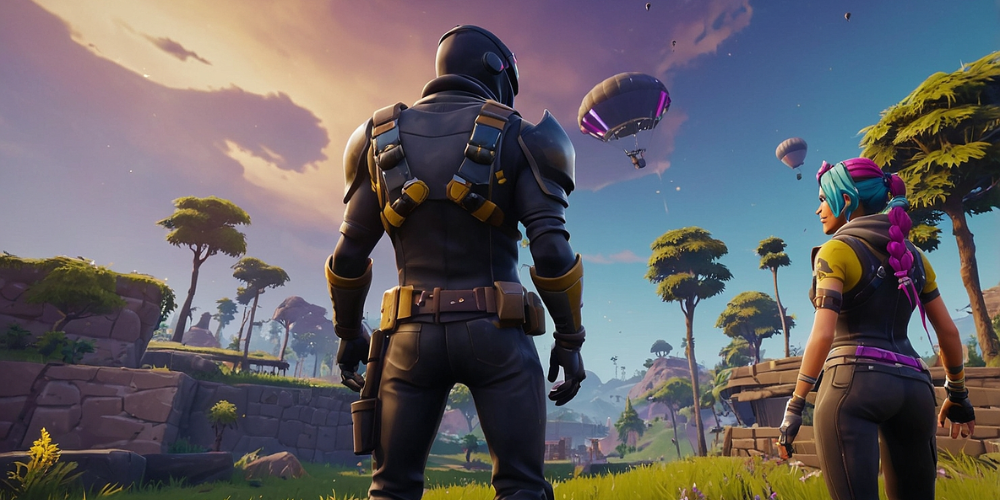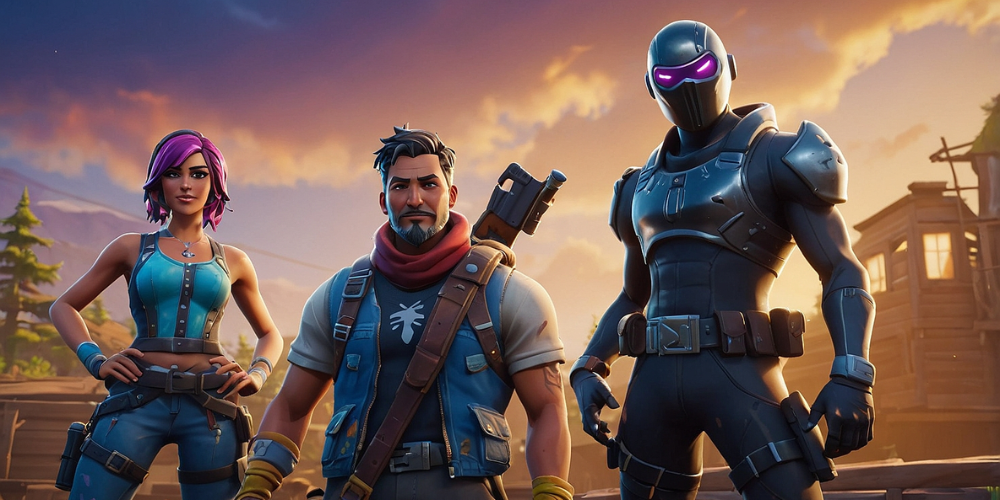Fortnite: Cross-Platform Battle Royale Dynamics: Analyze the impact of cross-platform gameplay on Fortnite's Battle Royale, focusing on competitiveness, matchmaking, and social interaction
Nov-06-2024

As an avid gamer, I have always been captivated by how cross-platform gameplay has revolutionized the gaming experience, particularly in the realm of Fortnite: Battle Royale. The moment I jumped into this vibrant universe, I realized that the ability to play with friends regardless of their chosen gaming platform was a game-changer. With Fortnite's vision of inclusivity, the dynamics of competition, matchmaking, and social interaction took on new dimensions.
Breaking Down Barriers
The traditional barriers of console exclusivity have long been a point of contention among gamers. When Fortnite introduced its cross-platform feature, it felt like a breath of fresh air. I could finally squad up with friends using different consoles, such as Xbox, PlayStation, and even PC. This inclusivity meant that no one was left out of the action, allowing for a more cohesive gaming community.
A New Era of Competitiveness
With the integration of cross-platform play, competitiveness in Fortnite reached new heights. Players bring their unique skills from various platforms to the table. For instance, I often noticed that PC players, with their precise controls and quick reflexes, could significantly outperform console players in specific scenarios. This disparity added a layer of depth to the competitive landscape, where skill became the ultimate equalizer, rather than the platform.
Matchmaking Meltdown
The matchmaking system in Fortnite underwent considerable changes to accommodate cross-platform play. Initially, I encountered some challenges, particularly when the matchmaking algorithm focused more on balanced play rather than accommodating skill levels. While it was exhilarating to team up with friends, finding matches was sometimes a frustrating experience, especially when I faced players with heightened sensitivity or unique control setups.

Adaptation to Various Play Styles
Each platform involves a different subset of control schemes that directly influence gameplay. While jumping into a match, I quickly adapted my strategies based on whether I was teaming up with a controller player or someone using a keyboard and mouse. This adaptability became crucial as I learned to anticipate the movements and styles of players from other platforms, enhancing my overall gameplay experience.
The Social Aspect: Building Bonds
Beyond the mechanics and competitiveness lies the social aspect of Fortnite. Playing across platforms has allowed me to foster friendships and gaming communities that would never have possible otherwise. Voice chat emotes and collaborative team plays became avenues for communication, transforming casual gameplay into epic friendships. These interactions often led to hilarious in-game moments that only deepened connections.
The Perfecting of Skills
Cross-platform play also acted as a catalyst for skill enhancement. Battling against a diverse group of players forced me to adapt and improve continually. I learned new strategies, patterns, and styles that I might have otherwise overlooked. Every match was an opportunity for growth, making me a more rounded player, ready to tackle challenges head-on regardless of who my teammates or opponents were.
Competitive Events and Cross-Platform Dynamics
Fortnite's competitive tournaments welcomed cross-platform gameplay, allowing gamers from every part of the gaming community to join in the competition. The thrill of participating in tournaments alongside players with varying skills from different platforms ignited my competitive spirit. These events not only showcased talent but also emphasized the importance of teamwork, blending diverse skills into cohesive strategies that were unique to each match.

Creating Unique Strategies
The ability to play with friends on different platforms allowed us to formulate unique strategies tailored to our team composition. I often teamed up with a friend on PC, utilizing their precision shooting and my quick reactions on the console for bait-and-switch tactics. This synergy enhanced our team’s overall performance, proving that successful coordination could rival even the most seasoned players.
The Role of Cross-Platform Updates
Epic Games' commitment to continuous improvement also played a significant role in enhancing cross-platform play. Regular updates addressing bugs and balance issues ensured that the gameplay experience was continually evolving. I appreciated how the developers actively sought community feedback, allowing players to voice concerns about competitive fairness or matchmaking preferences.
Adapting to Changes in Dynamics
With updates came changes to gameplay dynamics as well. New weapons, map alterations, and gameplay mechanics meant that I always needed to stay on my toes. I often found myself revising my strategies and learning to adopt new play styles that integrated seamlessly with these changes. Cross-platform play kept the game fresh and exciting, compelling me to experiment and adapt continually.
The Rise of Fortnite Communities
The impact of cross-platform play also spawned online communities dedicated to Fortnite strategies, tips, and tricks. Social media groups, streaming platforms, and forums provide avenues for sharing experiences and gaming tactics. I found myself diving into discussions, learning from others’ successes and failures, which helped refine my gameplay and keep me engaged with the community.
Challenges Faced in Cross-Platform Gameplay
Despite the numerous advantages, cross-platform play also brought about challenges. Instances of players encountering connectivity issues or performance lags while navigating through dynamic environments were common. Sometimes, these technical difficulties disrupted gameplay, leading me to strategize around limitations rather than embrace potential advantages.

Psychological Aspects of the Game
The social interactions fostered by cross-platform play also had psychological implications for me as a player. Engaging with diverse personalities in voice channels often led to emotional highs and lows, characterized by victories that felt like collective celebrations and losses that prompted heartfelt discussions. This unique communal aspect added a new layer of emotional investment, transcending beyond mere competition.
Influencing Future Gaming Trends
Fortnite's successful cross-platform model has set a precedent for the future of multiplayer gaming. Other developers have taken notice, seeking to replicate this formula in their titles. As I continue to explore gaming landscapes, I am eager to see how this trend will shape the future of competitive games, paving the way for an era of inclusivity and collaboration among players worldwide.
Community Feedback and Developer Responsiveness
Lastly, one of the most heartening aspects of Fortnite's cross-platform feature is the company’s responsiveness to player feedback. Epic Games actively engages with the community, seeking input to fine-tune their matchmaking systems and enhance the overall experience. This dynamic relationship between developers and players creates an environment where community voices matter, fostering a sense of shared ownership over the gaming experience.
As I continue to immerse myself in Fortnite's Battle Royale, I remain enthusiastic about the evolving dynamics brought forth by cross-platform play. With each match, I recognize the magic of uniting gamers from different platforms, forging friendships, and continuously discovering new strategies in this ever-expanding world.







